The Surreal Philosophy of Hollow Knight
A textual analysis of Hollow Knight. I look at surrealism and argue that the game pulls from it in highly effective ways.

SPOILERS FOR ALL OF HOLLOW KNGIHT
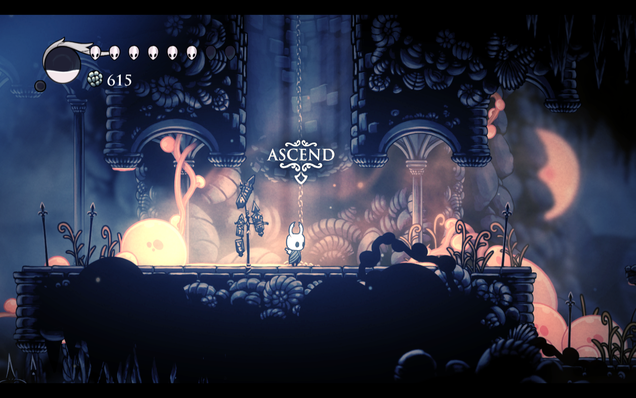
My bug-esque character falls many feet, lands with a thud and moves left, cape fluttering. They are a little cute, a little disconcerting, and wholly unique. Surrounded by similar, but more ugly, bug inspired enemies, I start satisfactorily hacking away at my enemies, which include fly-like bugs, charging squat bugs and lanky jumping bugs. The beautiful background establishes a fallen empire; runes, chains, askew signposts - the playground for your exploration, one focused on a journey into the depths so you can take out the King up top.
This is Hollow Knight: a game smacking of surrealism.Surrealism is the art movement that exploded in popularity in Europe around the World Wars and subsequently has influenced much of pop culture, from our meme culture (I was going to insert just one meme but just look at this Thrillist of the memes of only half of 2018 and tell me they are not all absurd and frequently surreal!) to advertisements. The incredible art that came out of this movement focused on dreams, the subterranean, childlike renderings, and everyday objects in strange and unfamiliar circumstances.
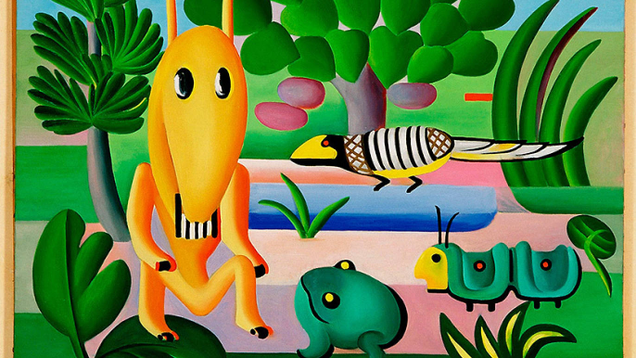
Tarsila do Amaral
Hollow Knight, in presentation and gameplay, takes many cues from surrealism. Firstly, the aforementioned descent suggests the subterranean, the subconscious and a descent into the unknown and potentially nightmarish. After all, at the very bottom you encounter numerous copies of your character who also happen to be very strong (they do two hits to your character instead of the standard one). This is also the second surrealist characteristic: running through many artist’s paintings are the same object or theme (Dalí and clocks, Ernst and birds) doubling and copying over and over again to maximize and enforce a certain feeling. This maintains the importance of dreams. A motif is repeated ad nauseam emphasizing the object, often to point out a unique quality of the object, or to point out its juxtaposition within the context of the scene the object finds itself in. So, as your Knight journeys below, dreams are reinforced through a descent into the unknown as well as the enemies who appear similar (to varying degrees) to your character.
Let’s start with obvious examples: about halfway through the game you acquire a Dream Nail. Not exactly a weapon, this item gives you the ability to hit Whispering Roots and activate Dream Bosses, giving you Essence that unlocks an end game area, items at a merchant, and, after acquiring all Essence, gives you a congratulatory achievement. Not only that, but already defeated bosses can be fought again by hitting their corpses with the Dream Nail. These are the hardest fights in the game, as well as entirely optional (insofar as you can achieve the first of three endings). One boss who can be hit with the Dream Nail is originally named Broken Vessel. They have your mask and a similar cloak and silhouette. The fight triggered by the Dream Nail changes the name toLost Kin, all but solidifying this doubling. It is a little sad; you are killing your sibling, as well as surrealist. Too close to home, this tough fight is thematically attuned to the game because your character is on a ruthless mission to conquer a kingdom, even if it means killing your own blood. You face off with yourself deep underground, the Lost Kin smacking themselves against the floor triggering otherworldly ghosts. Repetition, slight deviations, and uncomfortable moments all paint a picture of a world that is believable, but surreal, just barely understandable so as to stay sane.
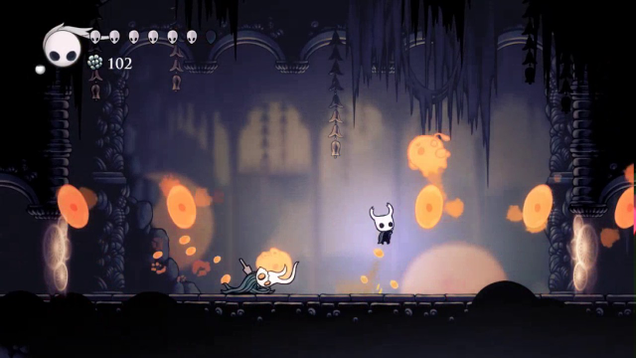 Lost Kin
Lost Kin
Whispering Root’s cause floating and iridescent pinwheels to float around a certain area. Translucent and temporary, you gather these up, a ringing chime sounding as you hit each one of them. Being temporary adds to the game’s wonderment. The real world, itself on shaky footing, merges with a dream, sending out collectibles.
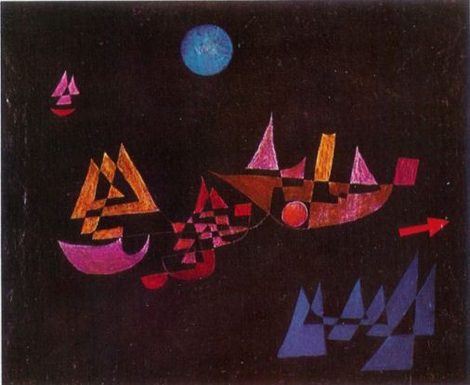
Paul Klee "Flying Boats"
Dreams play a prominent role in Surrealism, both theoretically and physically. Dreams are odd things: often forgotten, almost always absurd, and sometimes unsettling and scary. They have been much theorized but nothing relays dreaming as well as the best surrealist art. In surrealist art, which is traditionally hard to analyze (as in your high school’s English class’ question of “what does this mean?” often has no answer), you find communicated the feeling of being in a dream. It does not exactly make sense, but its highly interesting to experience and gives you feelings. In surrealism it is often about the how, not the why or what. How does the art communicate?
Hollow Knight’s map is cavernous, made to be explored and discovered. Immediately overwhelming, you begin to become familiar with the map as you explore - like discovering long shafts that drop into the City of Tears or the game’s genre’s dictates of backtracking with new abilities and items (it is a Metroidvania). The non-linearity forces exploration and Hollow Knight excels at interconnectedness. The map feels wholly complete and extremely easy to navigate after a few back and forths with most of the games areas discovered.
The game starts without direction. You drop down into the first area, given almost no direction and have to make due until you can buy a map. Once done with the first area, which is inspired by Medieval Europe, you enter Greenpath which is lush and wet. Greenpath is starkly different compared to Forgotten Crossroads, but you notice the similarities. It is still a fallen and pest ridden area, there are still the fallen markers to keep with the lost Kingdom theme, and many small paths.
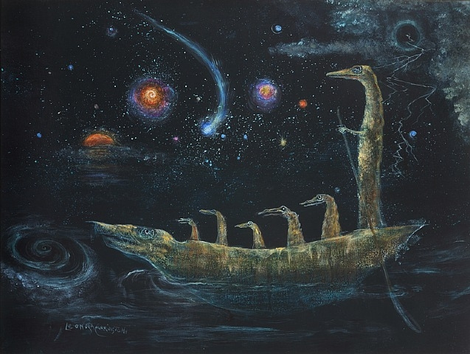
Leonora Carrington “How doth the little crocodile...”
The unconscious is allowed to be the ultimate actor in surrealist art. Often automatic art springs from oneself without thought or deliberate actions. It connects the doer to something more primal and raw than other forms of paintings. In the same way, your movements through Hallownest is culled from your memory, the developers having crafted a world in which hints and clues lead you to what you want with neither in-game handholding nor, hopefully, online guides. An area like Greenpath, as well as others, through a combination of amazing music, unique NPC gurgling and moving backgrounds works on many levels (these aspects make the infamous Deepnest one of my favorites). There is the well crafted gameplay consisting of gameplay and platforming but, and this is what kept me coming back to the game, all these elements of the presentation made playing Hollow Knight one of the most compulsive gaming experiences I have had. Because of the surrealist aspects in every facet of Hollow Knight’s package I just had to finish it (even after my 50th death to Soul Master).
Another striking moments of duplicates happens in the only town of the game, Dirtmouth, where there is a building that houses a small room with dolls (and even a drawing) of your character. This is Bretta’s house, so it serves a purpose of being funny, lighthearted, and a little quirky because Bretta is obsessed with you after you save her. But on its own, and with the obliqueness of the text of the item in the room, it serves a dual purpose of being slightly unnerving. I first saw this without having made the connection with the room to Bretta and was fascinated by the meaning and mystery. Your character, potentially a remnant of the once prosperous kingdom you now travel the runes of, is haunted and haunting. Haunted by a past and a future, needing to overtake the throne no matter the odds (this is mirrored by the game’s difficulty). Haunting because they are ghost like, inherently powerful and able to fulfill, from one view, an evil prophecy (or does your Knight becoming THE Hollow Knight restore the kingdom?).
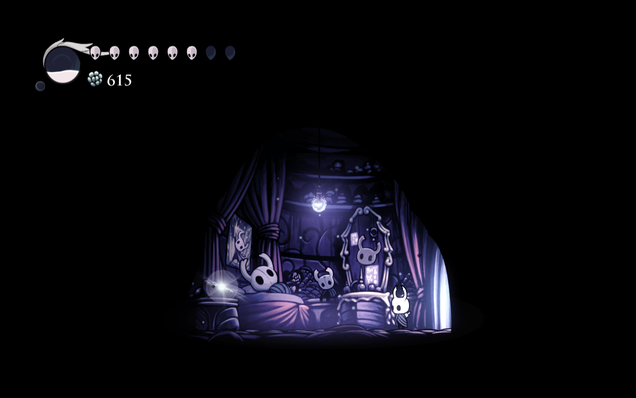
Hollow Knight is an amazing game because it has used the strengths of gaming as a medium. Instead of taking inspiration from films like top AAA studios, which are inherently non-interactive, Hollow Knight takes storytelling cues from modernist and postmodern literature, free jazz, and other interpretive, non-linear forms of art. Hollow Knight allows the player to interpret and take cues from its interactivity, not forcing you through long cutscenes with mediocre stories. Reveling in the unknown and showing the player the atmosphere, story and other presentation aspects instead of telling them the game becomes an impressionistic work rather than a cut and dry experience. Hollow Knight communicates through many aspects of its design, creating something more than the sum of its parts, creating an experience that is magical.
Read more about:
BlogsAbout the Author(s)
You May Also Like







.jpeg?width=700&auto=webp&quality=80&disable=upscale)








